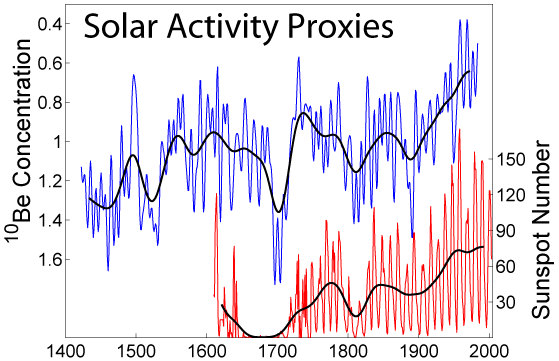- Joined
- Jan 28, 2013
- Messages
- 94,823
- Reaction score
- 28,342
- Location
- Williamsburg, Virginia
- Gender
- Male
- Political Leaning
- Independent
This is very challenging material, but some of our more math-minded DP'ers should find it interesting.
Radiation Transfer Calculations and Assessment of Global Warming ...
https://www.hindawi.com/archive/2017/9251034/
by H Harde - 2017 - Cited by 1 - Related articles
Volume 2017 (2017), Article ID 9251034, 30 pages ... Although in all these fields of climate sciences great progress has been achieved over the last decades and our ... [10]; Ziskin & Shaviv [11]; Scafetta & Willson [12]; Usoskin et al. [13]; Zhao ...
. . . . Altogether, we see that the positive feedbacks, originating from clouds, water vapor, and albedo, are partially compensated or in the case of a moderate cloud feedback are even overcompensated by lapse rate and evaporation feedback. Particularly clouds have two stronger opposing effects on the energy balance, which can neutralize each other or can even have an overall attenuating impact on the ECS, dependent on the mechanisms responsible for cloud changes. From these studies we conclude that all constraints can best be explained by a cloud feedback mechanism, which is dominated by the solar influence, while thermally induced contributions only should have minor influence.
Our investigations further indicate that a CO2 climate sensitivity larger than 1°C seems quite improbable, whereas a value of 0.6–0.8°C, depending on the considered solar anomaly, fits well with all observations of a changing solar constant, the cloud cover, and global temperature. A climate sensitivity as specified in AR5 (1.5–4.5°C) would only be possible when any solar influence could completely be excluded and the negative feedbacks further be attenuated.
Maybe the most important message of this investigation is that on the basis of well retraceable physical interrelations there exist several stronger arguments for the inclusion of some effects, which obviously were not considered in the IPCC reports and which can significantly attenuate the influence of CO2 on global warming. The discrepancies primarily go back to an overall negative feedback we find in our calculation, and to the inclusion of solar effects.
Radiation Transfer Calculations and Assessment of Global Warming ...
https://www.hindawi.com/archive/2017/9251034/
by H Harde - 2017 - Cited by 1 - Related articles
Volume 2017 (2017), Article ID 9251034, 30 pages ... Although in all these fields of climate sciences great progress has been achieved over the last decades and our ... [10]; Ziskin & Shaviv [11]; Scafetta & Willson [12]; Usoskin et al. [13]; Zhao ...
. . . . Altogether, we see that the positive feedbacks, originating from clouds, water vapor, and albedo, are partially compensated or in the case of a moderate cloud feedback are even overcompensated by lapse rate and evaporation feedback. Particularly clouds have two stronger opposing effects on the energy balance, which can neutralize each other or can even have an overall attenuating impact on the ECS, dependent on the mechanisms responsible for cloud changes. From these studies we conclude that all constraints can best be explained by a cloud feedback mechanism, which is dominated by the solar influence, while thermally induced contributions only should have minor influence.
Our investigations further indicate that a CO2 climate sensitivity larger than 1°C seems quite improbable, whereas a value of 0.6–0.8°C, depending on the considered solar anomaly, fits well with all observations of a changing solar constant, the cloud cover, and global temperature. A climate sensitivity as specified in AR5 (1.5–4.5°C) would only be possible when any solar influence could completely be excluded and the negative feedbacks further be attenuated.
Maybe the most important message of this investigation is that on the basis of well retraceable physical interrelations there exist several stronger arguments for the inclusion of some effects, which obviously were not considered in the IPCC reports and which can significantly attenuate the influence of CO2 on global warming. The discrepancies primarily go back to an overall negative feedback we find in our calculation, and to the inclusion of solar effects.
Last edited:





